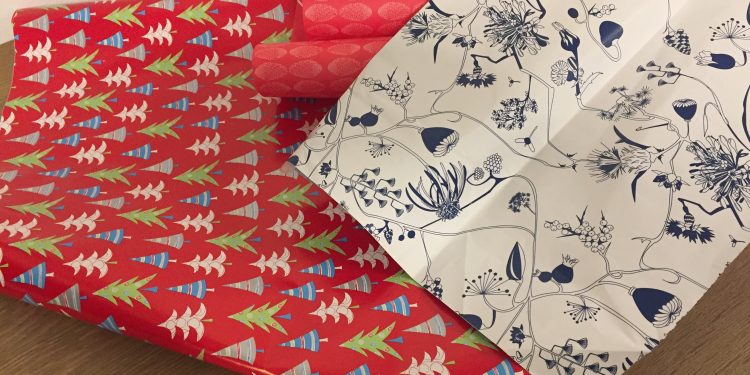Your gift-wrapping paper is not recyclable
The Danish paper recycling association asks consumers to refrain from putting their Christmas gift-wrapping paper in the bin for paper recycling.
The article continues below.
By Bente D. Knudsen
You may be one of those thinking you are doing a good deed for the environment by collecting all the gift-wrapping paper after the Christmas gift unwrapping ceremony – ready to go in the paper recycling bin.
It will come as a surprise that you are kindly asked NOT to do so by the paper recycling businesses.
Apparently, a great deal of gift-wrapping paper contains plastic film and glitter making it unsuitable for recycling.
This can contaminate the paper ready for recycling to such a degree that it can even create a huge extra cost in the recycling production.
what to do instead? see below.
Of course some gift wrapping paper is good for recycling, however, as this always creates a great deal of confusion as to what is and what is not, the Danish garbage handling companies kindly ask consumers to put all gift wrapping paper either in their ordinary household garbage bin, or collect it and put it in the “småt brændbart”, (small articles for burning) bin at the recycling centre or with their storskrald collection from their homes.
This actually is valid also for cardboard boxes, cardboard, pizza boxes, eggboxes as well.
The cardboard boxes and cardboard that have not contained any food can be put with the small articles for burning or the storskrald collection, however, the boxes used for food, such as pizza boxes and eggboxes, must go in the household garbage bin (in some municipalities this is called restaffald).
More tips for your garbage below.
What can you put in the paper recycling bin and what not ?
ONLY put in the paper recycling bin:
Newspapers, weeklies and advertising material, letters and envelopes, brochures, printing, writing and drawing paper:
Put in the household garbage bin or småt brændbart :
Gift-wrapping paper
Books
Eggboxes(Only garbage bin)
Pizza boxes (Only garbage bin)
Milk and juice paper cartons (Only garbage bin) In some municipalities these can be recycled with plastic in the plastic container as of 2023
Cardboard and cardboard boxes
PS: If you can take the cover off the books – then you can put the paper with the paper recycling bin and the cover in the household garbage bin or the småt brændbart.
In Denmark about 30 percent (household and professional (businesses and industry)) of all garbage is burnt in incinerator plants.
The oldest of the more than 30 incinerator plants in Denmark dates back to 1968.
The energy produced by the burnt garbage is used for heating houses (the so-called fjernvarme anlæg) and to make electricity thus reducing the need for coal, gas or oil. For instance in all of Copenhagen City, Frederiksberg and Gentofte this is the case.
The rest is either recycled or otherwise reused/stocked.
At this plant 65 percent of the plastic is recycled. LINK
The article continues below.
As far as household garbage is concerned Denmark is top of the EU average as far as burning garbage, thereby producing energy which can be reused, whereas less than one percent is deposited in garbage dumps.
Deposits are (open-air) landfills with garbage!
Household garbage Eurostat figures :
Denmark:
1 % in deposits
17 % compost
27 % recycled
55 % burnt
United Kingdom
28 % in deposits
17 % for compost
28 % recycled
27 % burnt
France:
26 % in deposits
17 % compost
22 % recycled
35 % burnt
EU average:
28 % in deposits
16 % compost
28 % recycled
27 % burnt
Denmark has already started to recycle more plastic waste in the future and we will update with new statistics from Eurostat as soon as they are available.


